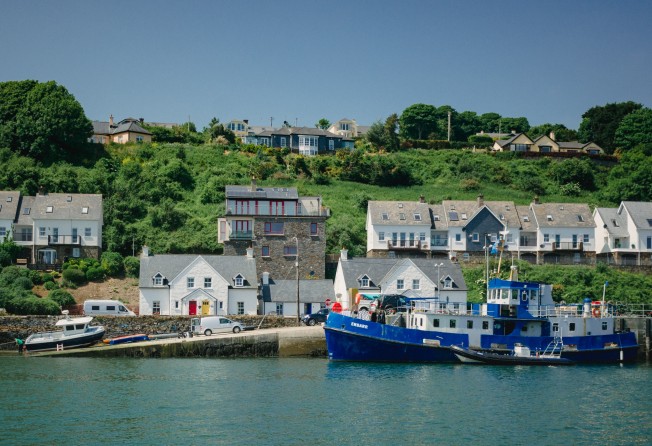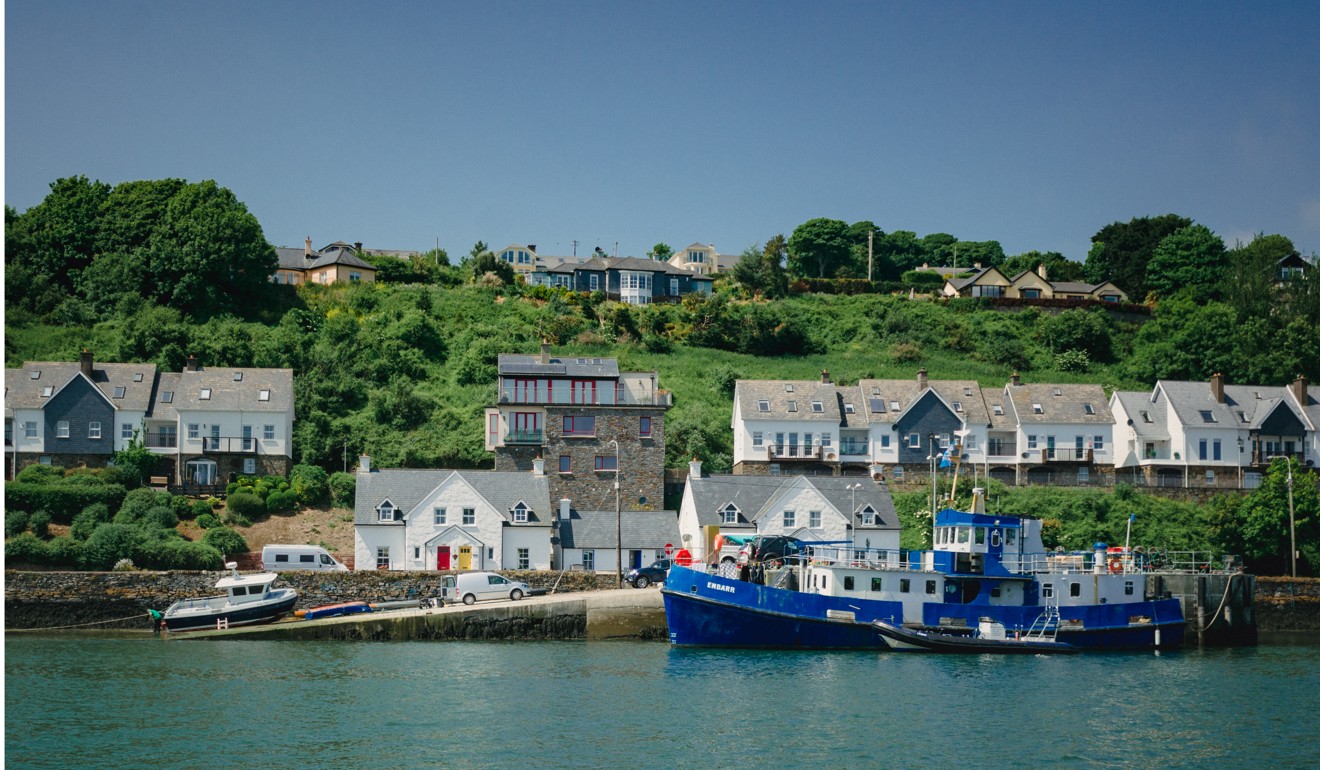
The town that sparked Ireland’s culinary revolution, with fresh local produce and hardly a potato in sight
Forty years ago, Kinsale set out to change Ireland’s reputation for terrible cooking. Today, the proof is in the puddings and purées of the colourful harbour town’s vibrant Eat Street

If you were to look for chef Olivier Queva during the day, it wouldn’t be a great idea to start in his kitchen. The rangy Frenchman is far more likely to be found roaming the hedgerows around his Irish hometown, in search of wild herbs and succulents, or free diving in the chilly Celtic Sea, spearfishing for that night’s specials.
Queva and his wife are the back- and front-of-house team at Max’s, one of the leading restaurants in Kinsale, on Ireland’s southern coast. They’re adept in a philosophy that is putting the town into fresh culinary waters as an exciting destination for a rising phenomenon: modern Irish cuisine.
With both the bountiful ocean and lush green fields of Munster province on its doorstep, Kinsale has always been a lively town. Over the years, its location and lifestyle have attracted adventurers, artists and entrepreneurs, imbuing the town with an independent and cosmopolitan edge.
Its maritime position also put it at the crux of pivotal battles against the British, who, in the 17th century, built a pair of forts to guard this valuable harbour. James Fort and star-shaped Charles Fort still cast stern shadows over its glistening waters.
The handsome harbour reveals itself as the visitor sweeps in on a road framed by sycamore and ash trees. From the water’s edge, narrow medieval streets fan out into steep hills studded with grand Georgian buildings, whose distinctive slate-fronted facades cast a patrician gaze over the gaily coloured buildings in the commercial hub below. Crowning the downtown lanes is “Eat Street”, as Kinsale’s most popular attraction is locally known, with a vibrant and aromatic rainbow of cafes, bars and restaurants.
Forty years ago, the town boldly declared itself the “Gourmet capital of Ireland”, open all seasons in a country with little taste for fancy fare. It is a label today’s restaurateurs disavow – the burden of expectation is too great, the arrogance too obvious – but the reputation has stuck and some people maintain that, while there have been ups and downs, it is no exaggeration.

For years, Irish cuisine was associated with boiled bacon (delicious when done right), murdered vegetables and an acre’s worth of potatoes on every plate. Its chief architect was the grinding poverty produced by 800 years of colonial rule. Its principal purpose was fuel for the day’s labours. Pleasure was reserved for the songs, stories and gatherings for which Ireland has long been famous.
This austere culinary past bred a kind of fear of food and a rootedness in the basic.
But Ireland has been evolving. The dawn of the Celtic Tiger, in the mid-1990s, brought opportunities to return home for many of those who had been pushed abroad on Ireland’s eternal emigration mill or who had gone on overseas holidays and decided to stay. They brought back ideas, influences and ambitions that found fertile ground in a newly confident country and one of the richest, agriculturally speaking.
But those heady, fecund days came to an end in 2008, when Ireland realised it was living in an economic snow globe. One that had melted.
When the crash came [...] those that survived looked around and started to think differently, and talk to the producers who were on their doorstep. We haven’t really changed our style of cooking over the years, but [...] our producers are part of the package now
“When the crash came, you suddenly had time to think,” says Liam Edwards, president of the Restaurant Association of Ireland and owner of one of Kinsale’s longest-running restaurants, Jim Edwards, a nautically themed seafood and steak joint on Market Lane.
“A lot of places closed their doors, but those that survived looked around and started to think differently, and talk to the producers who were on their doorstep. We haven’t really changed our style of cooking over the years, but [...] our producers are part of the package now.”
These producers are fundamental to the story of modern Irish cuisine. Whether it’s mushrooms, oysters, seasonal greens, ancient breeds of native beef cattle (namely Dexter), global-award-winning cheeses or locally caught fish, fresh off the boat, Irish producers are known by name and are as crucial to the food that appears on the plate as the chef and wait staff.
Siobhan Waldron and her husband, Gavin Ryan, opened The Black Pig five years ago and have been rushed off their feet ever since, thanks to a cosy-urbane atmosphere, extraordinary wine list and the ability to “take the simplest things and make them seem newly minted, newly imagined”, according to John & Sally McKennas’ Guide.

For Waldron, opening in Kinsale was an obvious choice. “You have the sea, surfing and a great community here. And then there’s the history that’s so strongly associated with food, and the fact that it is the gateway to West Cork, and we can work with all these producers,” she says.
The Black Pig counts about 20 kitchen suppliers. “It makes things more complicated than dealing with one wholesaler, but you get to know them, and they tell you what’s great right now, so it’s absolutely fresh and the ingredients speak for themselves,” she says.
Martin Shanahan, the chef-owner of Fishy Fishy and the man credited with reviving Kinsale’s culinary reputation 20 years ago, when other towns in Ireland were threatening to take over its mantle, also understands the importance of building relationships with his suppliers. And of listening when fishermen tell him that he can place all the orders he likes, but he’ll get whatever the sea chooses to give.
“When food is a gift, and not a commodity, then people take their time and get more pleasure out of it,” he says. “The beauty of Irish cuisine is what’s local.”

Queva agrees. “When you know where food comes from, you know how to treat it,” he says. The quality of Irish produce is allowing him to go back to his own culinary roots and the French tradition of focusing food around an ingredient, allowing it to speak for itself. It’s a far cry from his first days in Ireland, in 1986, he says, when Dijon mustard was nowhere to be found and olive oil was used mainly for cleaning ears.
Strolling southeast along Eat Street, or Main Street, as it’s officially called, the first restaurant you’ll pass is Bastion, a chic-in-raw-pine spot that serves john dory with miso-glazed pencil leeks, oyster crème fraîche and leek ash. Moving on past a row of buzzy hotspots painted all the colours of the crayon box – such as Supper Club (cocktails a speciality) and Cru (tapas-style dining and excellent wines by the glass) – you’ll reach Finns’ Table, Kinsale’s most elegant address, where you might plump for Rosscarbery black pudding croquettes with apple purée, sweetcorn panna cotta and braised apple salsa.
Colourful cafes and arty shops such as the treasure trove that is Granny’s Bottom Drawer draw pedestrians towards the deep-red facade of Max’s. On a summer evening, you will find Queva in his kitchen, turning out specials such as braised pork belly, slow cooked in local cider with red cabbage, yellow courgette and pickled cherries.

Further along, if you’re not distracted by the smell of Bruno’s wood-fired sourdough pizzas topped with Irish buffalo mozzarella, you’ll reach the dark blue facade of The Black Pig, on Lower O’Connell Street, a satellite of Eat Street. Savour a little soft and buttery Tête de Moine cheese at the bar or perhaps some local cheese and charcuterie, before tucking into a delightful smoked Ummera duck breast with orange, rocket and fennel salad and Korean sauce.
Walking your meal off is no chore, either. The Lower Road (also known as the Scilly Walk) leads along the coast, then downhill to the Bulman pub (in case refreshment is needed) and on to the beautifully restored Charles Fort.
Getting there
Cork is the nearest airport to Kinsale. Numerous airlines offer connecting flights between Hong Kong and Cork, including Air France, British Airways and KLM. Alternatively, you can fly to Dublin direct on Cathay Pacific.